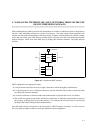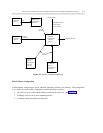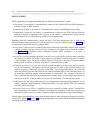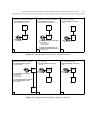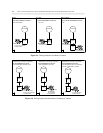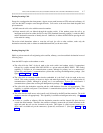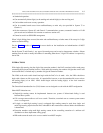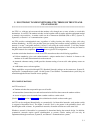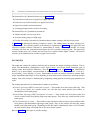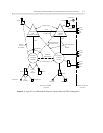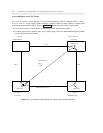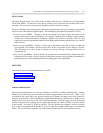4-8 MAIN-SATELLITE/TRIBUTARY (MS/T) NETWORKS THROUGH THE UDP OR MULTIPREMISES PACKAGES
_ ___________________________________________________________________________________________________________________________
_ ___________________________________________________________________________________________________________________________
_ ___________________________________________________________________________________________________________________________
From the main to the satellite or tributary:
• The caller dials the destination extension and the AAR databases route the call appropriately. This
capability is available with the UDP, PNA, and ETN (Standard Network) packages. (See figures 4-4(E)
and (F).)
• The caller dials the DAC plus the extension number and the system finds the trunk associated with the
DAC and passes the extension number to the next switch over the trunk group that the DAC designates.
The capability is available on all communications systems, although its primary use is on the
DIMENSION, System 85, and Generic 2 communications systems using the Multipremises package. (See
figure 4-4(D).)
• The caller dials an extension number that has embedded in it the DAC of the tie trunk to the next
switch. This routing capability is available on all communications systems, although its primary use is
on DIMENSIONs, System 85s, and Generic 2 communications systems using the Multipremises package.
(See figure 4-4(D).)
Study figures 4-3 through 4-6 for the dialing alternatives given the type of communications system and the
networking software available.
Other Routing Capabilities
In addition to handling incoming and outgoing calls, MS/T complexes handle interswitch attendant service,
and interswitch call transfer.
Inter-PBX attendant service is a System 75 and Generic 1 feature that allows calls to be routed to a remote
attendant over a tie trunk. If the attendant extends a call to an unattended switch, the tie trunk on which the
call arrived and an additional tie trunk, connecting the attended with the unattended switch, are tied up for
the duration of the call.
Interswitch call transfers allow voice terminal users to transfer a call to a terminal on the same switch or on
any other switch in the MS/T complex. However, the number of digits dialed must consistent with the
uniform dialing plan for the network.
ENGINEERING CONSIDERATIONS
The DEFINITY Communications System and System 75 and System 85, Traffic Theory manual (555-104-504)
will help you determine the number of tie trunks you need in your MS/T configuration. Note, however, that
if heavy traffic occurs between a satellite or tributary switch and any ETN tandem switch, a bypass access
trunk between the switches may be the most economical alternative. In addition, the bypass access trunk
may be needed to off-load traffic from already overloaded intervening main or tandem switches.
Below is a list of attributes of the MS/T trunk. Having a trunk conform to items on the list is just one of the
considerations in implementing a MS/T network.
• No second dial tone returned at the receiving end upon seizure.
• Wink, immediate, or delay dial start.




